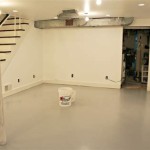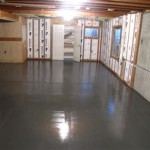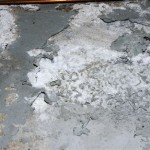How Much To Carpet Basement Stairs: A Comprehensive Guide
Carpeted stairs offer a multitude of benefits for basements, including enhanced safety, improved aesthetics, and increased comfort. However, determining the cost of carpeting basement stairs requires careful consideration of several factors. This article provides a comprehensive overview of the elements influencing the price, allowing for a more informed budgeting process.
Several components form the overall cost of carpeting basement stairs. These include the carpet material itself, underlayment, installation labor, and potentially, any necessary preparation work. Each of these will be discussed in detail, exploring their individual contribution to the total expense.
Carpet Material and Associated Costs
The type of carpet selected is the most significant factor determining the price. Carpets vary widely in terms of material, construction, and quality, and each characteristic impacts the final cost. Common carpet materials include nylon, polyester, olefin (polypropylene), wool, and triexta.
Nylon is a popular choice due to its durability, stain resistance, and wide range of styles. It is a synthetic fiber known for its ability to withstand heavy foot traffic, making it suitable for stairs. The cost of nylon carpet typically ranges from $3 to $8 per square foot.
Polyester is another synthetic option, often chosen for its affordability and stain resistance. While less durable than nylon, polyester comes in a variety of colors and textures. Its cost generally falls between $2 and $5 per square foot.
Olefin, or polypropylene, is a synthetic fiber known for its resistance to fading and moisture. It is often used in outdoor rugs and is a budget-friendly option. However, it is not as durable as nylon or polyester and may not be ideal for high-traffic stairs. Olefin carpet costs approximately $1 to $3 per square foot.
Wool is a natural fiber renowned for its luxurious feel, durability, and natural stain resistance. It is a premium option and consequently, the most expensive. Wool carpet can cost between $8 and $20 per square foot. Its inherent qualities make it a long-lasting and aesthetically pleasing choice, but the upfront investment is considerable.
Triexta is a relatively new synthetic fiber that combines the best qualities of polyester and nylon. It is exceptionally stain-resistant, durable, and environmentally friendly. Triexta carpet typically costs between $4 and $7 per square foot.
Beyond the material, the carpet's construction also affects the price. Loop pile carpets, such as Berber, are known for their durability and resistance to crushing. Cut pile carpets, like plush or Saxony, are softer but may show wear more easily. Patterned carpets and those with intricate designs will generally cost more than solid-color options based on manufacturing complexity and material waste.
When estimating the carpet material cost, it's crucial to accurately measure the stair area. This involves measuring the width and depth of each step, including the riser (the vertical part of the step) and the tread (the horizontal part). The total square footage needed should also account for waste and pattern matching, typically adding 10-15% extra material.
Underlayment Selection and Expense
Underlayment, also known as carpet padding, is an integral component of a carpeted stair installation. It provides cushioning, reduces noise, improves insulation, and extends the life of the carpet. The type and quality of underlayment significantly influence both the comfort and the overall cost.
Common types of underlayment include foam, rubber, and felt. Foam underlayment is generally the most affordable option, but its density and thickness can vary widely. A higher-density foam will provide better cushioning and support. Rubber underlayment is more durable and offers superior noise reduction. Felt underlayment is often made from recycled materials and provides good support and cushioning. The cost of underlayment typically ranges from $0.50 to $3 per square foot.
The selection of underlayment depends on the carpet type, the intended use of the stairs, and the desired level of comfort. For high-traffic basement stairs, a denser and more durable underlayment, such as rubber or high-density foam, is recommended. This will help protect the carpet from wear and tear and provide better support underfoot.
Proper installation of the underlayment is essential. It should be securely attached to the stairs using staples or adhesive. The underlayment should also be cut to fit the stairs precisely, avoiding any gaps or overlaps. Incorrect installation can lead to uneven wear and reduce the lifespan of the carpet.
While it may be tempting to save money by skipping underlayment, this is generally not advisable. Underlayment provides numerous benefits that contribute to the overall value and longevity of the carpet installation. It is an investment that can pay off in the long run by protecting the carpet and enhancing comfort.
Installation Labor and Potential Preparation Costs
The cost of labor for carpet installation significantly impacts the overall project expense. Labor costs vary depending on the complexity of the job, the installer's experience, and the geographic location. Installing carpet on stairs is more labor-intensive than installing it in a room due to the precision required for each step.
Professional carpet installers typically charge by the hour or by the square foot. Hourly rates can range from $30 to $75 per hour, while per-square-foot rates can range from $2 to $8. The cost of installing carpet on stairs is generally higher than installing it on a flat surface because of the intricate cuts and fitting required.
Factors that can increase the installation cost include the complexity of the stair design, the presence of curved or winding stairs, and the need for any specialized tools or techniques. Removing existing flooring, such as old carpet or tiles, can also add to the labor cost. In some cases, the subfloor may require repair or leveling before the new carpet can be installed.
Preparation work is essential for a successful carpet installation. This may involve cleaning the stairs thoroughly, repairing any damage to the subfloor, and ensuring that the stairs are level and smooth. Uneven or damaged stairs can cause the carpet to wear unevenly and can also pose a safety hazard. Addressing these issues before installation can prevent problems in the future.
When hiring a carpet installer, it is crucial to obtain multiple quotes and check references. A reputable installer will provide a detailed estimate that includes the cost of labor, materials, and any necessary preparation work. It is also important to discuss the installation process and any potential challenges that may arise.
While DIY carpet installation may seem like a cost-saving option, it is generally not recommended for stairs, particularly for individuals without prior experience. Proper installation requires specialized tools, techniques, and a keen eye for detail. A poorly installed carpet can not only look unprofessional but can also pose a safety hazard. Hiring a professional installer ensures that the job is done correctly and that the carpet will last for many years.
In conclusion, the cost of carpeting basement stairs is influenced by several key factors. The type and quality of carpet material, the selection of underlayment, and the cost of installation labor all contribute to the overall expense. Careful consideration of these factors, along with any necessary preparation work, will allow for a more accurate budgeting process and a successful carpet installation.

From Carpet To Hardwood How Easily Transform Your Stairs Little House Of Four Creating A Beautiful Home One Thrifty Project At Time

The Best Carpet For Stairs Solved Keep This In Mind While Shopping Bob Vila

Average Cost To Carpet Stairs In 2024 Forbes Home

Diy Basement Stair Remodel And How To Install An Indoor Outdoor Carpet Runner Noting Grace

Guide To Completing Open Basement Stairs Csg Renovation

Diy Carpet Installation On Stairs Newlywoodwards

New Grey Carpet On Basement Stairs Stock Foto Adobe

Choosing Flooring For Basement Stairs The Ultimate Guide

I Took Old Carpet Off Basement Stairs And Now Need Advice Badly Hometalk

Diy Carpet Installation On Stairs Newlywoodwards
Related Posts







